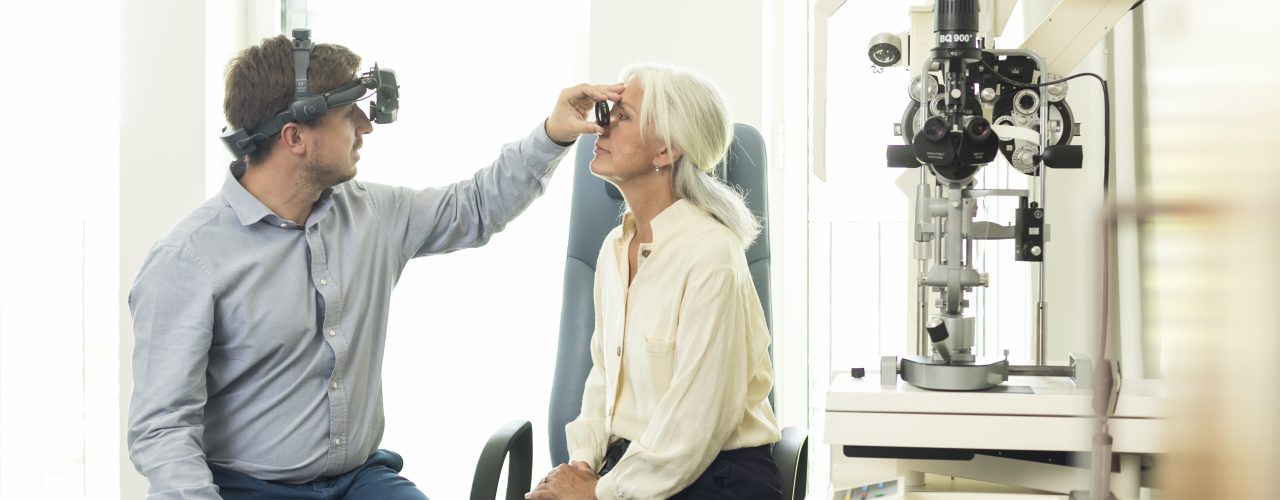Prof. Koss is the winner of the most decorated award of the German ophthalmological society (Leonhard Klein Prize) for his surgical innovations in the field of vitrectomy.
A number of diseases can only be cured by surgery.
In almost all cases, it is necessary to remove the vitreous in order to be able to carry out surgical measures directly or under the retina. This complex of operations is described by the term “vitrectomy”, which literally means “cutting out the vitreous body”. However, this process alone is only a partial aspect of often complicated interventions.
In the case of eyes that still contain lenses, these procedures are often combined with the removal of the eye lens and simultaneous replacement with a plastic lens.
Surgical access to the vitreous cavity takes place in the area of the so-called pars plana of the ciliary body. The more detailed description of this surgical procedure is referred to as pars-plana vitrectomy (or PPV for short). The accesses are approximately 3.5 to 4 mm from the cornea.
Vitrectomy is performed through minimally invasive approaches to the eye. Depending on the size of the access, we speak of a 20-gauge, 23-gauge, 25-gauge, 27-gauge vitrectomy. The access cuts are only 0.9mm, 0.6mm, 0.5mm or 0.4mm in size.
The surgeons at the Nymphenburger Höfe Eye Center have immense experience in the treatment of all retinal diseases. During surgical procedures, they almost only perform vitrectomies with a 23-gauge or 25-gauge system (0.6 mm or 0.4 mm). The wound trauma is minimal, even if the operation is combined with a lens removal. Only in rare cases must stitches be made. The procedures are designed in such a way that the access routes close by themselves.
Vitrectomy is considered in the following cases:
The operation is performed under local anesthesia and general sedation. General anesthesia is rarely necessary. The combination of sedation and local anesthesia means that the operation itself is not perceived as bad at all and the patients are happy that they have been spared general anesthesia.
The surgeon uses a microscope and additional special lens systems for the procedure to perform the microsurgical manipulations on the retina.
The following steps are carried out:
